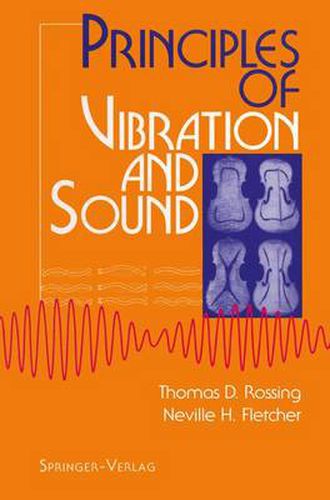Readings Newsletter
Become a Readings Member to make your shopping experience even easier.
Sign in or sign up for free!
You’re not far away from qualifying for FREE standard shipping within Australia
You’ve qualified for FREE standard shipping within Australia
The cart is loading…






This title is printed to order. This book may have been self-published. If so, we cannot guarantee the quality of the content. In the main most books will have gone through the editing process however some may not. We therefore suggest that you be aware of this before ordering this book. If in doubt check either the author or publisher’s details as we are unable to accept any returns unless they are faulty. Please contact us if you have any questions.
Some years ago we set out to write a detailed book about the basic physics of musical instruments. There have been many admirable books published about the history of the development of musical instruments, about their construction as a master craft, and about their employment in musical perfor mance; several excellent books have treated the acoustics of musical instru ments in a semiquantitative way; but none to our knowledge had then at tempted to assemble the hard acoustic information available in the research literature and to make it available to a wider readership. Our book The Physics of Musical Instruments, published by Springer-Verlag in 1991 and subsequently reprinted several times with only minor corrections, was the outcome of our labor. Because it was our aim to make our discussion of musical instruments as complete and rigorous as possible, our book began with a careful introduction to vibrating and radiating systems important in that field. We treated simple linear oscillators, both in isolation and coupled together, and extended that to a discussion of some aspects of driven and autonomous nonlinear oscilla tors. Because musical instruments are necessarily extended structures, we then went on to discuss the vibrations of strings, bars, membranes, plates, and shells, paying particular attention to the mode structures and characteristic frequencies, for it is these that are musically important.
$9.00 standard shipping within Australia
FREE standard shipping within Australia for orders over $100.00
Express & International shipping calculated at checkout
This title is printed to order. This book may have been self-published. If so, we cannot guarantee the quality of the content. In the main most books will have gone through the editing process however some may not. We therefore suggest that you be aware of this before ordering this book. If in doubt check either the author or publisher’s details as we are unable to accept any returns unless they are faulty. Please contact us if you have any questions.
Some years ago we set out to write a detailed book about the basic physics of musical instruments. There have been many admirable books published about the history of the development of musical instruments, about their construction as a master craft, and about their employment in musical perfor mance; several excellent books have treated the acoustics of musical instru ments in a semiquantitative way; but none to our knowledge had then at tempted to assemble the hard acoustic information available in the research literature and to make it available to a wider readership. Our book The Physics of Musical Instruments, published by Springer-Verlag in 1991 and subsequently reprinted several times with only minor corrections, was the outcome of our labor. Because it was our aim to make our discussion of musical instruments as complete and rigorous as possible, our book began with a careful introduction to vibrating and radiating systems important in that field. We treated simple linear oscillators, both in isolation and coupled together, and extended that to a discussion of some aspects of driven and autonomous nonlinear oscilla tors. Because musical instruments are necessarily extended structures, we then went on to discuss the vibrations of strings, bars, membranes, plates, and shells, paying particular attention to the mode structures and characteristic frequencies, for it is these that are musically important.